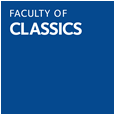Athenian vase-painters endeavoured to produce scenes which appealed to as many different customers as possible. The Epeleios Painter and his circle decorated mainly cups in the early 5th century BC. Beazley derided their paintings as Schmiererei, but their vases nevertheless attracted buyers on the shores of the Black Sea, in Thasos, Athens, where their cups were dedicated on the Acropolis and used in the Agora, Etruria, and perhaps beyond, since repairs on a cup fragment once on the Roman art market suggest that it was bought by a prince of the Hallstatt culture. The appeal of the workshop’s cups lay in the shape, which suggested that the owner was part of the symposium class, and the relentlessly cheerful scenes of symposia, komasts, athletes, and warriors, which implied a Greek aristocratic lifestyle too. A few of the mythological scenes appear to have a special Athenian flavour as they juxtapose the hero of the Archaic period, Herakles, with the new hero of the democratic age, Theseus, but both would have been popular choices for Etruscan graves because they personified exemplary lives and both escaped death
Numerous inscriptions, some just scribbled words, some proper kalos inscriptions, must have added to the attraction overseas as a second sophisticated layer of decoration, especially in Etruria: all the workshop’s vessels praising Athenians by name have been found there and probably identified the buyers as cultured individuals partaking in Greek culture. The named males, just like the individual styles, show that the Epeleios Painter and his fellows were closely linked to other Athenian cup painters of the period.



